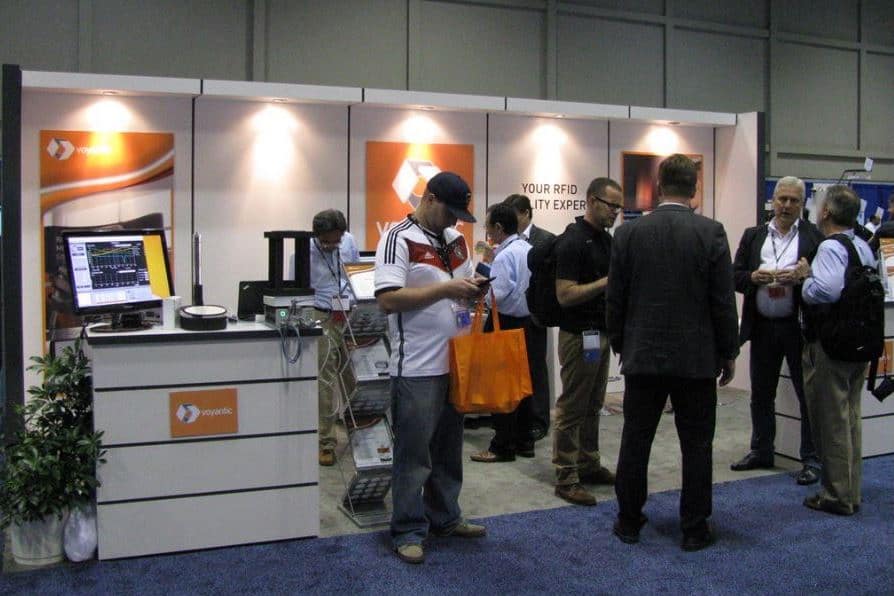Two weeks ago was again the time of year when the RFID industry met at RFID Journal Live! in Orlando, Florida. The show is one of the main events of the year for Voyantic as well. But what were the hot topics this year?

As always, several new products were presented at the show. A significant trend for the last few years has been UHF RFID finding its way into mobile phones, first as add-on modules, but now also integrated into the phones. Another new product category was inventory robots that were seen roaming the aisles of the show. Mikel Choperena of Farsens writes about these trends in more detail in his trade show review.
Industry-wise, the airlines seem to be currently on the up in RFID adoption. Delta was one of the keynote speakers of the conference, and several companies were presenting SAE AS5678 certified tags meant to be used in airplanes. But other industries, such as manufacturing, healthcare RFID, and retail were also well represented.
Passive Sensors Steal the Spotlight
After last year’s show, I wrote that one of the hot topics was (link: http://voyantic.com/blog/posts/is-now-the-time-for-passive-rfid-sensing text: passive RFID sensing popup:yes), and noted that sensing occupied four of the ten Best New Product nominations.
It looks like sensing picked up where it left off last year.
This year’s award was shared between two innovative sensing products:
- The first winner was SMARTRAC Technologies, for its Sensor Tadpole, a passive UHF sensor that can detect the presence of moisture. The sensor tag has been used by automobile manufacturers for ensuring that the cars leave the factory watertight.
- The other winner was Phase IV Engineering for its RFID Sensor Reader, which is designed to collect accurate data from passive RFID sensor tags. Think of it as the missing piece that links passive RFID sensors to industrials PLCs, converting sensor readings from a tag’s memory to industry standard voltage or current levels. Keep your eye on this company!
Bubbling Under in the Academic Scene
RFID Journal Live! was co-located with several smaller conferences, one of them the IEEE International Conference on RFID, “the premier conference for exchanging all technical research in RFID”. My colleagues were kind enough to relieve me from booth duty, so I had a chance to attend the conference, and spend some time with my fellow geeks.
This year was the 10th occurrence of IEEE RFID, and I can proudly say that I have participated in pretty much all of them in some role: in the Technical Program Committee, as a session chair, or as an invited speaker. The conference covers different aspects of RFID research; this year the largest amount of presentations fell under the categories of
- antennas & propagation
- circuits
- devices & readers
- protocols & security and
- energy harvesting & wireless power.
For me, the most interesting talk was given by Dr. Greg Durgin of Georgia Tech. He received the best paper award for his paper titled “RF Thermoelectric Generation for Passive RFID”. The paper proposes a new way to power passive tags based on thermoelectric generation instead of traditional diode rectification. To put it in perspective, Alien Technology presented their new Higgs-EC tag IC at the show, reported to have best in class read sensitivity of -22.5 dBm with a dipole antenna. Dr. Durgin’s proposal could bring sensitivity down to -34 dBm, allowing read ranges of up to 100 m.
Think about all the applications that a passive 100 m read range could allow.
RFID has definitely not seen its limits yet!
All blog posts